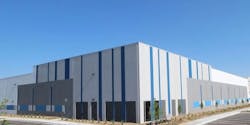Roundtable: Modular Innovation Opportunities for Data Centers
For today's installment of Data Center Frontier's Q2 Executive Roundtable, our four data center industry leaders offer opinions on opportunities for modular design innovation within or adjacent to hyperscale or colocation facilities, to meet escalating compute for skyrocketing ultra-cloud, HPC and AI/ML workloads, as well as emerging grid and on-site power requirements and opportunities.
Our Executive Roundtable for the Second Quarter of 2024 is comprised of:
Phillip Marangella, Chief Marketing and Product Officer, EdgeConneX
Ciaran Flanagan, Global Head of Data Center Solutions, Siemens
Joe Reele, VP Solutions Architects, Schneider Electric
Allen Rounds, Sales Executive, Kohler
Now onto the third question of the week for our Executive Roundtable for the Second Quarter of 2024.
Data Center Frontier: From your view of the data center industry, what are the top opportunities for any type of modular design innovation within or adjacent to hyperscale or colocation facilities, the better to measure up to escalating compute as well as grid and on-site power requirements for meeting the expected, ongoing rise in demand for ultra-cloud, HPC and AI/ML workloads?
Phillip Marangella, EdgeConneX: In addition to the massive scale that we now have factored into our builds, we also must accelerate the speed at which we build AI data centers. Modular and pre-fab design and build solutions will significantly help to shorten the time to market for new capacity.
Similarly, alternative, on-site power generation is something EdgeConneX has been doing to augment the grid in power-constrained markets like Dublin.
Given the massive demand for new data center capacity, more markets will have constrained power in the future. So, short-term and long-term power alternatives will be essential to ensure we can provide customers with adequate and scalable power solutions.
Ciaran Flanagan, Siemens: Design innovation is the lifeblood of this industry, from chip to grid, we have seen massive improvements in efficiency. This trend will continue as inefficient workloads retire in favour of more efficient infrastructure.
In a practical sense, I see the opportunity to work closer with the Utility and Power industry. This industry can better participate in the grid operations for everyone’s benefit…the scale is clear and may open new commercial opportunities too.
We see modular and prefabricated designs as more than just an opportunity but an obligation. What’s next? Perhaps we need now to look at how we can locate modular AI infrastructure at the Utility.
Joe Reele, Schneider Electric: PreFab is a “needle-moving” technique/methodology in today’s mission critical/data center space.
Innovating modular design helps overcome known issues, like field labor shortages and fast build schedules, and it also helps to standardize design and operations.
This positively affects cost, risk, and speed-to-market.
Prefabricated modular data centers offer several advantages for organizations seeking a fast, sustainable, energy-efficient alternative to buying land and building a large facility designed on their own.
We're seeing many companies do this to accommodate future growth caused by increasing AI/ML workloads.
Allen Rounds, Kohler: In my view, the biggest advantage of modular design is that it improves speed to market for new data centers or data centers undergoing upgrades.
For data center vendors, modularity allows components to be more easily customized, supporting more rapid manufacturing and quicker adaptability for changing demands and technological advancements.
For example, different parts and features of a backup power generator can be modules that allow for easy swapping or upgrades as needed.
Modularity also simplifies the manufacturing process, as the components can be produced in parallel, reducing lead times and improving efficiency. In the context of an entire facility, modularity affects the speed and ease of installing data center systems.
For instance, power and cooling units can be manufactured off-site and then quickly assembled on-site for a faster and easier construction or upgrade process.
Overall, new workloads like AI demand more (and more capable) facilities, and the industry can facilitate this faster with a modular approach to design, construction, and installation.
Next: Data Center Industry Misconceptions
About the Author
Matt Vincent
A B2B technology journalist and editor with more than two decades of experience, Matt Vincent is Editor in Chief of Data Center Frontier.







